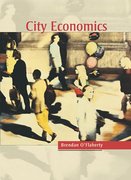5. Sewer City is built along one side of a long road. Everyone in Sewer City has...
Question:
5. Sewer City is built along one side of a long road. Everyone in Sewer City has to be connected to the sewer plant, which is at the end of the road. Everyone in the world is identical. If they live elsewhere, they have to pay $10,000 for sewer and housing costs. Otherwise, Sewer City is just like every other place in the world.
Sewer City is laid out in a series of 100 lots, each fifty feet wide. The sewer connection has to be at the end of the lot farthest from the sewer plant, for technical reasons. Pipes come only in one standard size, and never fill up.
On each lot, the owner can build as high as she wants, and can fit as many people as she wants to into the resulting house. Taller houses, though, have higher per unit operating costs. In particular, if q people live in a house, the total cost is C(q) = 500q2.
Every resident of a house produces ten units of sewage.
The sewer plant costs $400,000 to build, no matter how many people live in Sewer City. Once the plant is built, processing a unit of sewage costs nothing.
a. What is the optimal price that should be charged for sewage in Sewer City?
b. If the optimal price is charged, what will rent per person be? How many people will live on each lot? How much profit will each owner make?
c. Suppose that the deficit that results from the optimal sewage price is funded through a land tax. How much total land tax will have to be collected?
How much from each lot? What is the after-tax profit of each owner? Should Sewer City stay in business?
d. Suppose that Sewer City decides that the sewer operation should pay for itself and therefore adopts average cost pricing. If the population stays the same, how much will each person have to pay for sewage disposal?
How much rent will each person have to pay?
e. The lot owners know when they decide to build the houses that the sewers will be subject to average cost pricing. How many people will live on each lot? (Note: fractions are acceptable; if there are multiple equilibria, the one with an increasing marginal cost of building is the one that will be stable.)
f. Will Sewer City be more densely populated with optimal pricing or with average cost pricing?
g. What will after-tax profit per owner be? Is this more or less than it was with optimal pricing?
Step by Step Answer:







